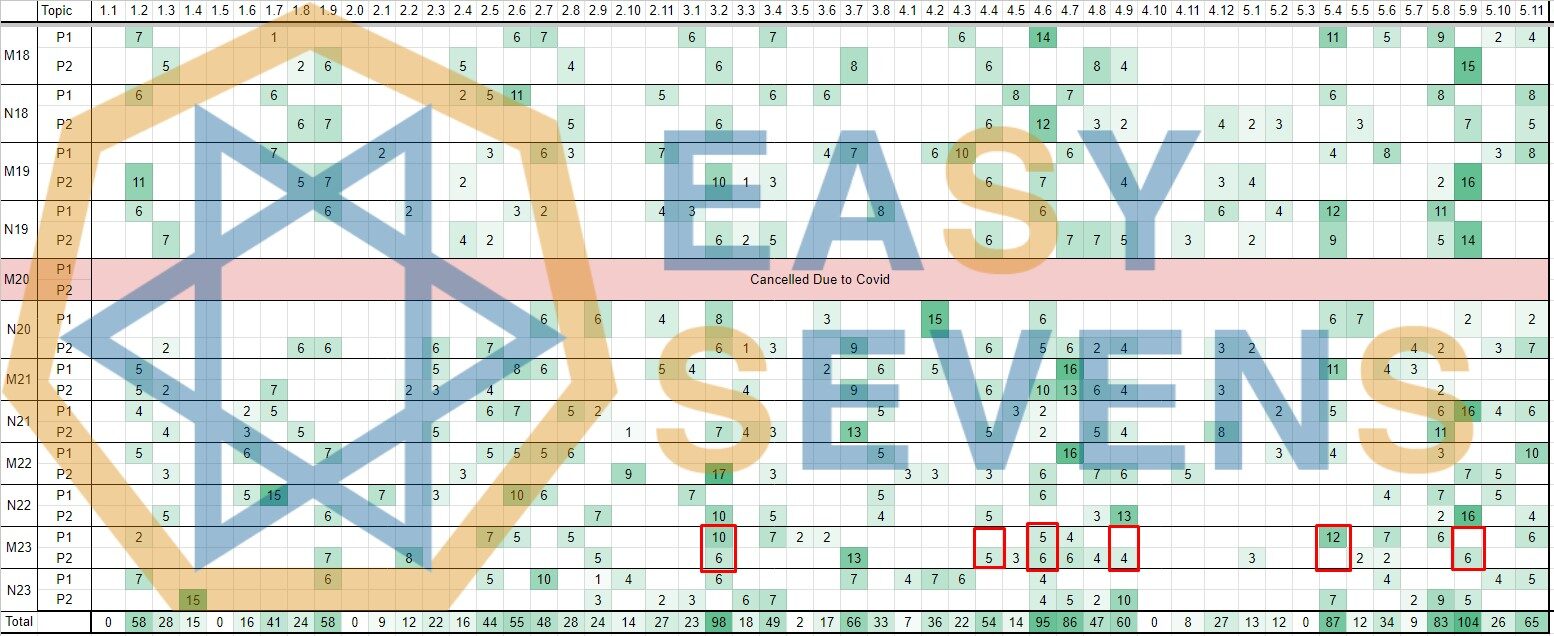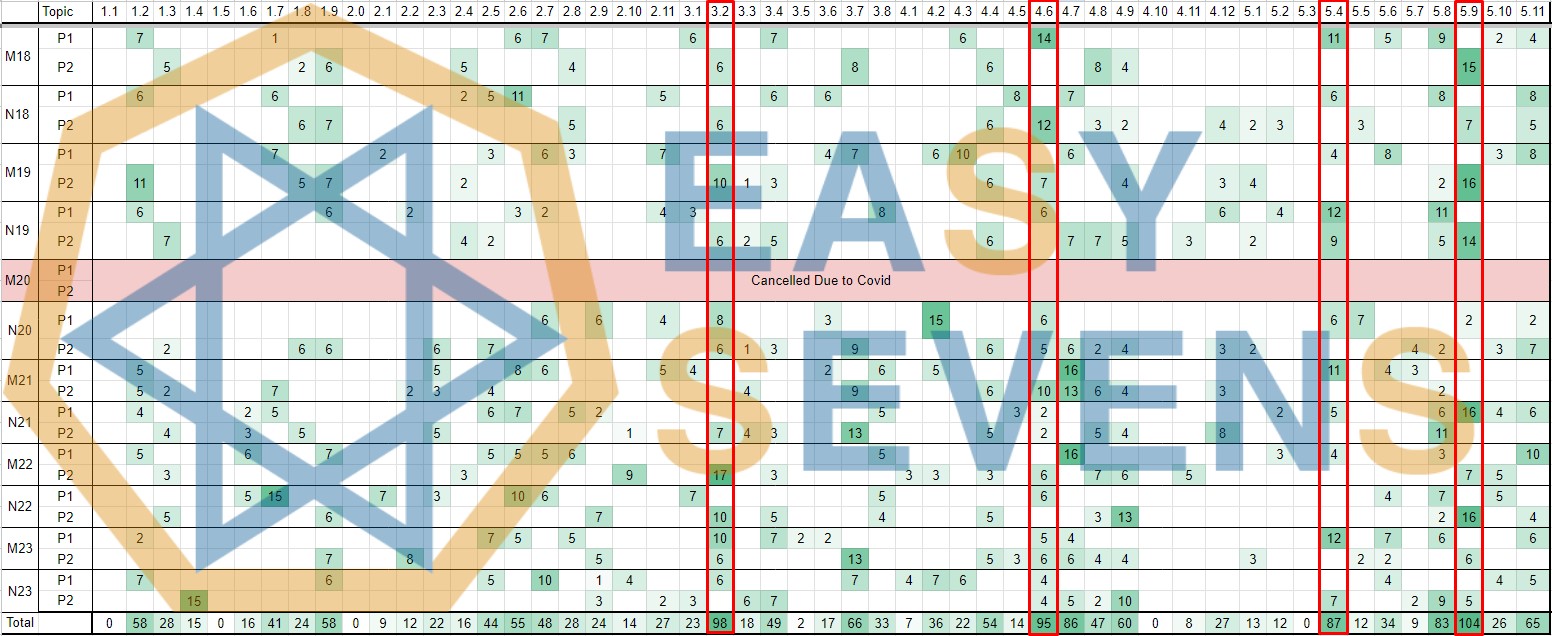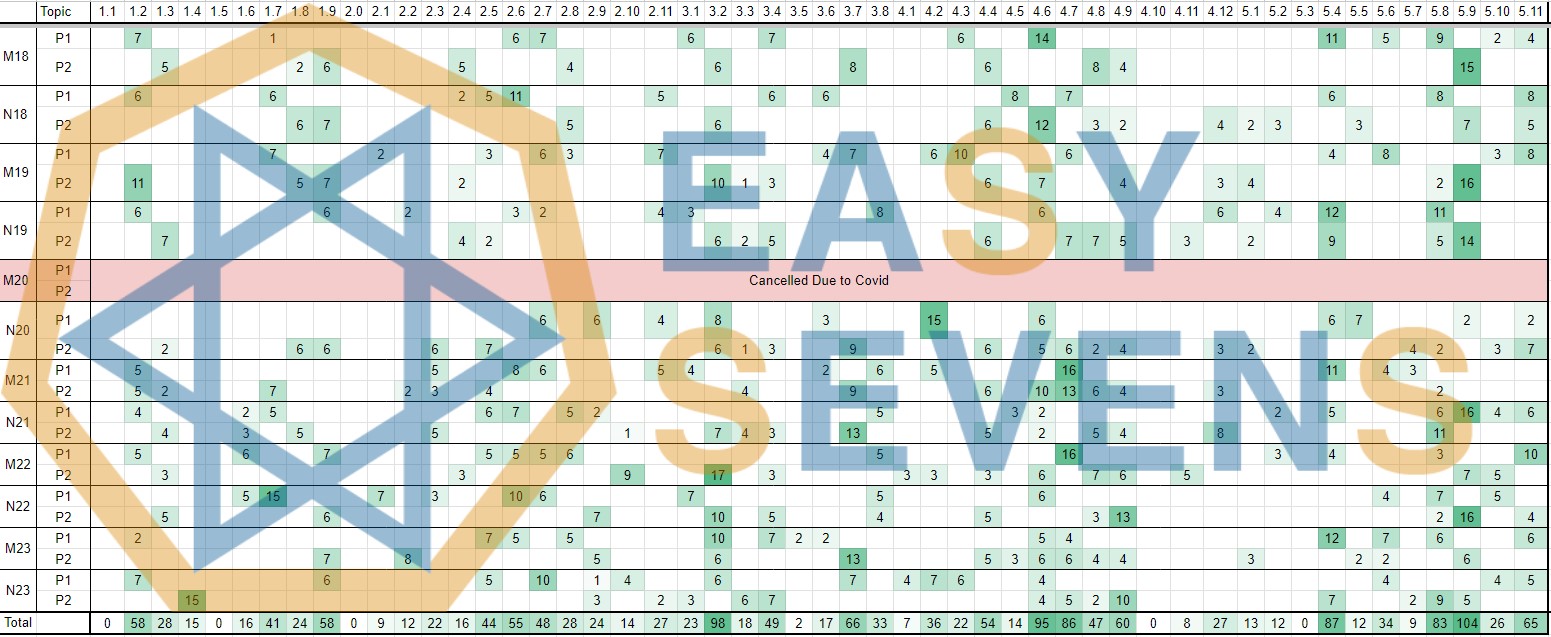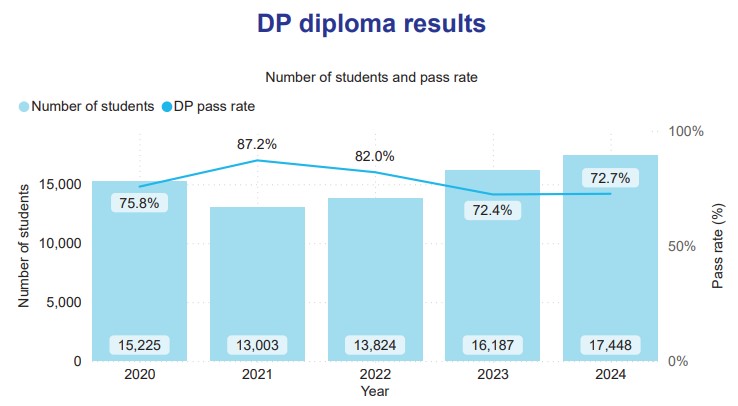In the world of International Baccalaureate (IB) Math, the AASL Math exams hold immense significance, constituting a substantial 80% of a student’s final grade. Consequently, meticulous preparation is paramount for students aiming to achieve their desired results. In this comprehensive article, we delve into the intricacies of past IB Math exams to discern patterns and formulate a prediction for the AASL M2024 exam, offering invaluable insights to aid students in their preparation journey.
View Data Spreadsheet Here: https://bit.ly/41zPIKu
Understanding the Data Collection Process
To embark on our prediction journey, we meticulously gathered data from the past five years’ IB Math exams, spanning from May 2018 to November 2023. For the older syllabus, we referred to the Math SL paper, while for the newer syllabus years, we analyzed the AASL paper. It’s imperative to note that for May sessions, we consistently referred to the timezone 2 paper.
Each question and sub-question underwent meticulous analysis, wherein we categorized them into respective topics listed on the AASL subject guide. In instances where questions overlapped multiple topics, we meticulously scrutinized the markscheme to accurately allocate individual marks to specific topics.
While our efforts were exhaustive, it’s essential to acknowledge the inherent complexity in categorizing questions accurately. Despite our best efforts, we cannot guarantee absolute precision, given the intricate nature of certain topics. For instance, topics like 4.6 and 4.11 both encompass conditional probabilities, posing challenges in definitive categorization.
Reflection on M2023 Predictions
Before delving into our predictions for the May 2024 IB Math AASL exam, let’s reflect on the accuracy of our M2023 predictions. Our analysis indicated several topics deemed extremely likely to appear on the M2023 exams, and our predictions were remarkably accurate. Noteworthy mentions include topic 3.2, accruing 16 points, topic 4.4’s appearance in paper 2 as anticipated, and the prominence of topic 4.6, accumulating 11 points. However, topics 4.9 and 5.9 marginally underperformed compared to our predictions.
Conversely, topics categorized as moderately likely to feature on the M2023 tests exhibited slightly lower alignment with our predictions, with only topic 5.4 resonating with our forecast.

Predictions for May 2024 IB Math AASL Exam
Building upon our past analyses and reflecting on the trends observed, we present our predictions for the May 2024 IB Math AASL exam, categorizing topics based on their likelihood of inclusion.
Topics Very Likely to be on May 2024 IB Math AASL Exams (Top Study Priority)
Topic 3.2 Sine Rule, Cosine Rule, SOHCAHTOA: This perennially significant topic consistently commands substantial points, particularly in the May examination sessions. Exhibiting no signs of abatement, topic 3.2 remains a focal point of assessment. Noteworthy instances include M22’s allocation of 17 points and M23’s 16 points.
Topic 4.6 Venn and tree diagrams, probability of combined events, conditional probability and independent events: Renowned for its consistent accumulation of points, topic 4.6 continues to maintain its prominence. With no indication of deceleration, this topic remains a key area of examination. Notable instances include M22’s allocation of 6 points and M23’s 11 points.
Topic 5.4 Tangents and Normals: A stalwart presence in May sessions since M18, topic 5.4 retains its significance in the upcoming exam.
Topic 5.9 Kinematics Problems: Despite witnessing a reduction in the weightage of questions, topic 5.9 remains pivotal, accumulating the most points among all topics. Recent years have seen its continued assessment, albeit with reduced marks allocated.

Topics Moderately Likely to be on May 2024 IB Math AASL Exams (Medium Study Priority)
Topic 1.9 Binomial Theorem: Consistently featuring a short question worth approximately 6-7 marks, topic 1.9 merits attention as a medium study priority.
Topic 4.9 Normal Distribution: Despite its consistent appearance in May exams over the past five years, topic 4.9 assumes a medium study priority due to its relatively lower weighting in May examinations, exemplified by its 4-mark allocation in May 2023.
Conclusion
In conclusion, navigating the terrain of IB Math examinations necessitates a thorough understanding of past trends and a keen insight into potential future trajectories. By leveraging data-driven analyses and discerning patterns, students can chart a course towards success in the upcoming AASL M2024 exam.
While our predictions offer a roadmap for focused preparation, it’s imperative for students to approach their studies holistically, ensuring comprehensive coverage of all topics within the Math syllabus. Moreover, maintaining a disciplined study regimen, seeking clarification on challenging concepts, and practicing with past papers can significantly enhance preparedness and confidence levels.
As students embark on this journey, it’s crucial to remember that success is not solely defined by exam outcomes but by the depth of understanding gained and the resilience cultivated along the way. With diligence, perseverance, and a strategic approach, students can navigate the IB Math landscape with confidence, poised to excel in the AASL M2024 exam and beyond.
Our predictions are based on meticulous analysis of past IB Math exams spanning multiple years. While we strive for accuracy, it’s essential to acknowledge the inherent variability in exam content. Nevertheless, our predictions offer valuable insights to guide focused preparation.
We meticulously gathered data from the past five years’ IB Math exams, categorizing questions into respective topics listed on the AASL subject guide. Each question and sub-question underwent careful scrutiny, with marks allocated to specific topics based on the markscheme.
While our math tutor endeavored to categorize questions accurately, absolute precision may be challenging to achieve due to the nuanced nature of certain topics. Despite our best efforts, variations in interpretation may exist. However, our categorization provides valuable insights into potential question types.
The likelihood of topics appearing on the exam is influenced by historical trends, with some topics consistently featuring across multiple exam sessions. Additionally, the weighting of topics may vary, impacting their prominence in the exam.
Students can leverage our predictions to prioritize their study efforts, focusing on topics categorized as very likely or moderately likely to appear on the exam. Adopting a disciplined study regimen, seeking clarification on challenging concepts, and practicing with past papers can enhance preparedness and confidence levels.




